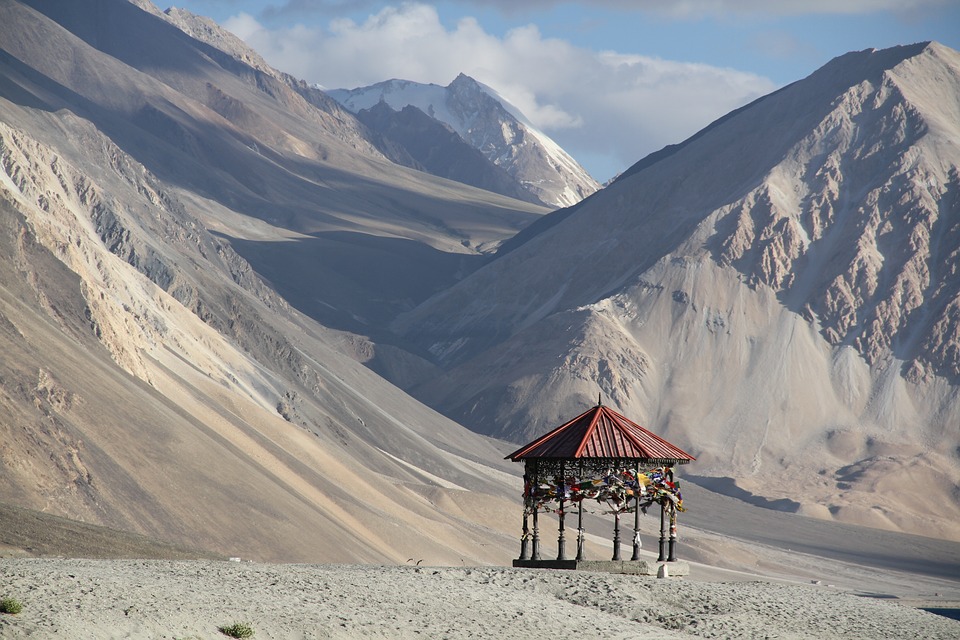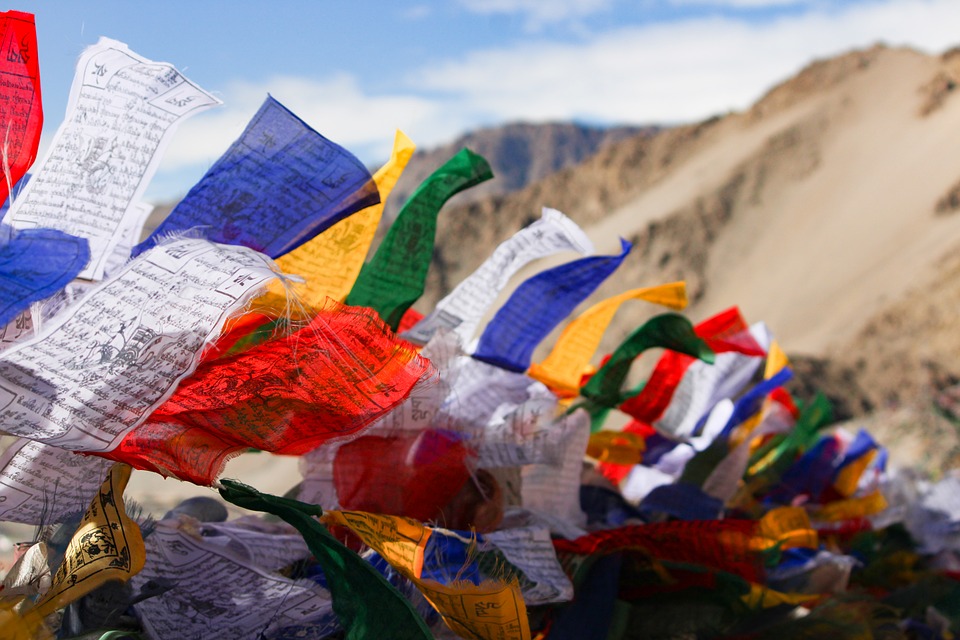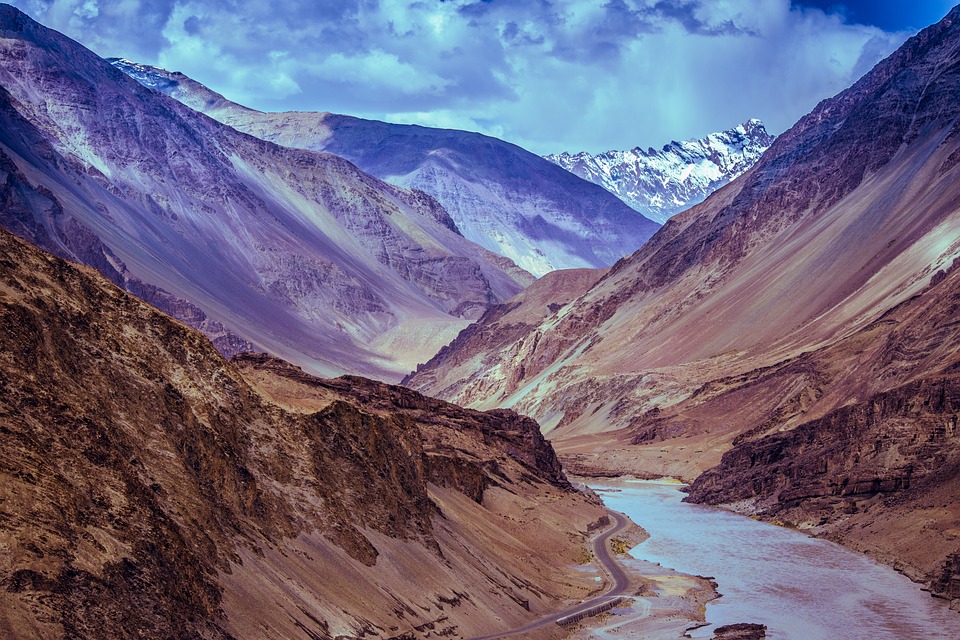traNs-Himalayan
Jeep safari
From $1995.00 per person, double
7 Days | 6 Nights
Adventure lovers won’t want to miss this! Our 5 day jeep safari begins in hill town of Manali, located in the “Switzerland of India.” Over the next 7 days your expert guide will take you over 3 Himalayan passages where the scenery changes from lush green valleys to the stunning mountains including Ladakh, known world over as “the last Shangri La”.
6 nights accommodation: 2 nights in Manali, 1 night in Sarchu, 1 night in TSO Moriri, 2 nights in Leh
All meals
Expert certified program guide
Visit some of the regions most famous sites including Hadimba Temple, Vashists Hot Water Springs, Atal Tunnel, Tso Moriri Lake, Tsokar Lake, Karzok Village and Leh, capital of Ladakh
Walking tour of Manali
Private Jeep
Note: The best time of year to experience this program is mid-June to mid-September.
Day 1
Morning flight from Delhi to Kullu (Manali). On arrival you will be met by a Sky Vacations ambassador for your drive to Manali. Located on the banks of the Beas River at 2050 m/ 6,724 ft, Manali is the northern end of the Kullu Valley in Himachal Pradesh. The enchanting valley is so picturesque that it has earned the name of ‘Switzerland of India’. It is also the gateway to the mighty mountain desert of Ladakh.
Upon arrival in Manali, check in at the hotel. The rest of the day is at leisure to explore the Manali Bazaar and visit the newly constructed colorful Tibetan Monastery in Manali.
Day 2
Today explore Manali with a local guide. You’ll visit Hadimba Temple, built in 1533, Manu Temple, dedicated to Manu Rishi, creator of the human race and Vashist Hot Springs. Later in the day it’s off to Solang Nala, a beautiful meadow, for a hike to help get you acclimated to your surroundings.
Day 3
Today after an early breakfast, drive through the recently opened Atal Tunnel to enter the Lahaul valley.
Atal Tunnel (also known as the Rohtang Tunnel) is a tunnel built under the Rohtang Pass in the Eastern Pir Panjal range of the Himalayas on the Leh – Manali Highway. The length of this tunnel is 9.02 km, located at 10,00 feet making it the longest high altitude tunnel in the world!
As we exit the South Portal of the tunnel, you’ll see the landscape changing dramatically and greenery being replaced by hills. As we drive, the Buddhist influence is apparent. The people here have distinct Tibetan features. We cross the Chandra River via a bridge and continue our drive passing through Keylong- the district headquarters of Lahaul valley on to Jispa, a small village on the bank of Bhaga River.
From Jispa, continue the drive to Sarchu en route crossing Bara Lacha La (4,892 m/ 16,045 ft). A cloudy sky can make the mountains look especially dramatic and always makes one speechless; the hillside and rocks of shades of grey, red and purple are breathtaking.
Sarchu is the border between Jammu & Kashmir and Himachal Pradesh. Here, mountains give way to vast plains. The days are warm and breezy and the nights are cool.
Day 4
Today our drive takes us up the Gata Loops, a series of 21 hairpin bends carved into the mountainside, and brings us to Lachung La (5,065 m/16,616 ft), After crossing the pass, the road then twists its way to Pang, through an amazing canyon with sheer cliffs and rocky outcrops looming up on both sides of the road.
After a short break at Pang (4,530/ 14,850 ft), we drive on to Tso Moriri lake. En route we visit Tsokar Lake (4,512 m/ 14,800 ft), also known as White Lake due to the salt deposits around it. The lake is approx 45 km short of Tso Moriri. We then cross over Polo Kongka La (4,950 m/ 16,236 ft) to enter into Rusphu region which is known for its nomadic settlements. On the way at Polo Kongka pass we may come across yak hair tents of a nomadic tribe.
Day 5
Today we explore Karzok village and walk along the shores of Tso Moriri Lake, the 2nd largest lake in Ladakh, after Pangong Lake. Karzok village is inhabited by a small community of Changpa tribe people who were earlier nomads but now have settled here permanently. The monastery here is more than 500 years old and lies on the trading route between Spiti in Himachal and Ladakh.
The clear blue Tso Moriri Lake is one of the most breathtaking lakes in Ladakh region. The lake is about 40 km long and is flanked by the Trans Himalaya and the Greater Himalaya ranges of mountains. This lake, considered sacred, is a breeding ground for numerous species of birds like Great Crested Grebe, the Brahmini duck, Bar Headed Geese etc. This region also has a large population of the elusive Kiang.
Later we drive to Leh – the capital of Ladakh region via Mahe bride. If time permits, we’ll stop en route at Chumathang Hot springs, believed to have medicinal qualities. From Mahe bride, we follow the road along Indus River up to Leh. As we drive toward Leh, the valley gets more fertile. We arrive in Leh by early evening.
Day 6:
After breakfast, it’s off to visit two important sites in Leh, Shey Palace and Stok Place.
Shey Palace was built in 1645 by Deldan Namgyal as a summer residence for the kings of Ladakh. It is the oldest palace in Ladakh and above the palace is an even older, ruined fortress. The Gompa has a 12-m high seated Buddha statue made out of gilded copper sheets and is the biggest statue in the region made from metal.
Stok Palace is the present residence of the royal family of Ladakh. The palace was built in 1825 and has an impressive collection of royal costumes, old thankas (tapestries) and the king’s crown etc.
On the way back to our hotel, we visit the SOS village – the home for Tibetan Refugees. SOS village houses a school, clinic and a craft shop and also has a lovely, two‐story, golden‐roofed summer palace of His Holiness The Dalai Lama.
After lunch at the hotel, walk up to Shanti Stupa for a panoramic view of Leh town.
Day 7:
Morning transfer for your outbound flight
| LOCATION | NUMBER OF NIGHTS | ACCOMMODATION |
| Manali | 2 | Manu Allaya Resort |
| Sarchu | 1 | Goldrop Tented Camp |
| Tso Moriri | 1 | Tso Moriri Camp and Resort |
| Leh | 2 | Ladakh Sarai |
Prices are land only per person based on double occupancy. Restrictions apply. For our complete terms and conditions, click here.
6 nights accommodation: 2 nights in Manali, 1 night in Sarchu, 1 night in TSO Moriri, 2 nights in Leh
All meals
Expert certified program guide
Visit some of the regions most famous sites including Hadimba Temple, Vashists Hot Water Springs, Atal Tunnel, Tso Moriri Lake, Tsokar Lake, Karzok Village and Leh, capital of Laddak
Walking tour of Manali
Private Jeep
Day 1:
Morning flight from Delhi to Kullu (Manali). On arrival you will be met by a Sky Vacations ambassador for your drive to Manali.
Located on the banks of the Beas River at 2050 m/ 6,724 ft, Manali is the northern end of the Kullu Valley in Himachal Pradesh. The enchanting valley is so picturesque that it has earned the name of ‘Switzerland of India’. It is also the gateway to the mighty mountain desert of Ladakh.
Upon arrival in Manali, check in at the hotel. The rest of the day is at leisure to explore the Manali Bazaar and visit the newly constructed colorful Tibetan Monastery in Manali.
Day 2:
Today explore Manali with a local guide. You’ll visit Hadimba Temple, built in 1533, Manu Temple, dedicated to Manu Rishi, creator of the human race and Vashist Hot Springs. Later in the day it’s off to Solang Nala, a beautiful meadow, for an hike to help get you acclimated to your surroundings.
Day 3:
Today after an early breakfast, drive through the recently opened Atal Tunnel to enter the Lahaul valley.
Atal Tunnel (also known as the Rohtang Tunnel) is a tunnel built under the Rohtang Pass in the Eastern Pir Panjal range of the Himalayas on the Leh – Manali Highway. The length of this tunnel is 9.02 km and is the longest tunnel above 10,000 feet in the world.
As we exit the South Portal of the tunnel, you’ll see the landscape changing dramatically and greenery being replaced by hills. As we drive, the Buddhist influence is apparent. The people here have distinct Tibetan features. We cross the Chandra River via a bridge and continue our drive passing through Keylong- the district headquarters of Lahaul valley on to Jispa, a small village on the bank of Bhaga River.
From Jispa, continue the drive to Sarchu en route crossing Bara Lacha La (4,892 m/ 16,045 ft). A cloudy sky can make the mountains look especially dramatic and always makes one speechless; the hillside and rocks of shades of grey, red and purple are breathtaking.
Sarchu is the border between Jammu & Kashmir and Himachal Pradesh. Here, mountains give way to vast plains. The days are warm and breezy and the nights are cool.
Day 4:
Today our drive takes us up the Gata Loops, a series of 21 hairpin bends carved into the mountainside, and brings us to Lachung La (5,065 m/16,616 ft), After crossing the pass, the road then twists its way to Pang, through an amazing canyon with sheer cliffs and rocky outcrops looming up on both sides of the road.
After a short break at Pang (4,530/ 14,850 ft), we drive on to Tso Moriri lake. En route we visit Tsokar Lake (4,512 m/ 14,800 ft), also known as White Lake due to the salt deposits around it. The lake is approx 45 km short of Tso Moriri. We then cross over Polo Kongka La (4,950 m/ 16,236 ft) to enter into Rusphu region which is known for its nomadic settlements. On the way at Polo Kongka pass we may come across yak hair tents of a nomadic tribe.
Day 5:
Today we explore Karzok village and walk along the shores of Tso Moriri Lake, the 2nd largest lake in Ladakh, after Pangong Lake.
Karzok village is inhabited by a small community of Changpa tribe people who were earlier nomads but now have settled here permanently. The monastery here is more than 500 years old and lies on the trading route between Spiti in Himachal and Ladakh.
The clear blue Tso Moriri Lake is one of the most breathtaking lakes in Ladakh region. The lake is about 40 km long and is flanked by the Trans Himalaya and the Greater Himalaya ranges of mountains. This lake, considered sacred, is a breeding ground for numerous species of birds like Great Crested Grebe, the Brahmini duck, Bar Headed Geese etc. This region also has a large population of the elusive Kiang.
Later we drive to Leh – the capital of Ladakh region via Mahe bride. If time permits, we’ll stop en route at Chumathang Hot springs, believed to have medicinal qualities. From Mahe bride, we follow the road along Indus River up to Leh. As we drive toward Leh, the valley gets more fertile. We arrive in Leh by early evening.
Day 6:
After breakfast, it’s off to visit two important site in Leh, Shey Palace and Stok Place.
Shey Palace was built in 1645 by Deldan Namgyal as a summer residence for the kings of Ladakh. It is the oldest palace in Ladakh and above the palace is an even older, ruined fortress. The Gompa has a 12-m high seated Buddha statue made out of gilded copper sheets and is the biggest statue in the region made from metal.
Stok Palace is the present residence of the royal family of Ladakh. The palace was built in 1825 and has an impressive collection of royal costumes, old thankas (tapestries) and the king’s crown etc.
On the way back to our hotel, we visit the SOS village – the home for Tibetan Refugees. SOS village houses a school, clinic and a craft shop and also has a lovely, two‐story, golden‐roofed summer palace of His Holiness The Dalai Lama.
After lunch at the hotel, walk up to Shanti Stupa for a panoramic view of Leh town.
Day 7:
Morning transfer for your outbound flight
Prices are land only per person based on double occupancy. Restrictions apply. For our complete terms and conditions, click here.
CONNECT WITH US
Call Us
+1 877 666 3113
Email Us
info@skyvacations.net



